Pitch-perfect prosthetics
By Alex Branch
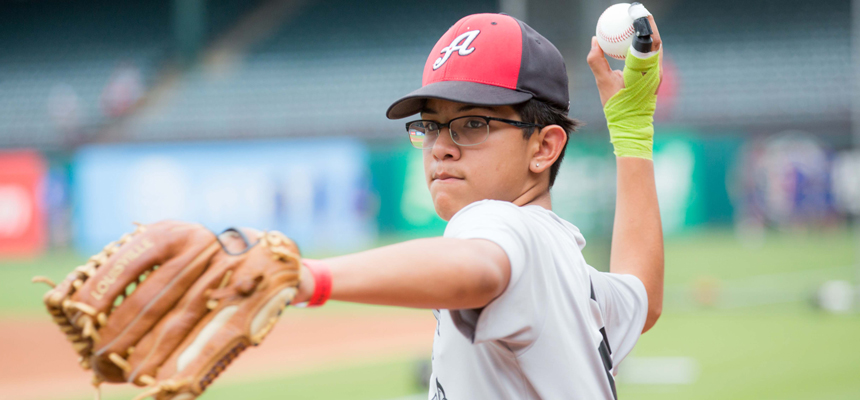
An escalator accident severed Cruz Ramos’ index finger when he was a child, but that didn’t stop him from becoming a talented baseball player.
He discovered in youth league that by adjusting his grip and putting spin on the ball, he could make most of the same throws as his teammates.
But at 14 he faced tryouts for elite club teams and the squad at Trimble Tech High School. The competition had reached the level where — finger or no finger — he needed to make all the throws from his position in right field if he wanted to play.
“My long throws kind of float because of the way I have to hold the ball,” Cruz said. “You have to be a player who can make all the throws.”
Cruz now has help making those throws thanks to a prosthetic finger created by Todd Dombroski, DO, and his team in the innovative Biomechanical Medicine Clinic at UNT Health Science Center.
Dr. Dombroski is a retired U.S. Army colonel who gained expertise with prosthetics treating U.S. military personnel disfigured by roadside bombs in Iraq and Afghanistan. He oversaw construction of the finger, which is made of plastic fiber using 3D printing.
The clinic’s multidisciplinary team of health care providers specializes in innovations for prosthetics and rehabilitation that enhance mobility and independence for patients.
“Whether it is a child or an adult, our patients want to function better in their lives,” Dr. Dombroski said. “Our team works together to make that happen.”
‘My finger!’
Ramos’ life changed when he was 5 years old. He was shopping at the mall with his mom, Cecilia Serrano. She gave him a quarter to play a game where he had to maneuver a motorized claw to grip a prize from a pile of toys.
He won a small rubber bouncy ball.
Riding the mall escalator next to his mother, Ramos dropped the ball, which rolled against the side of the escalator. Ramos bent down to grab it, sticking his right index finger in the crack between the escalator step and the side of the escalator.
His finger got stuck.
“My finger!” he shouted.
Serrano was afraid if she yanked too hard, his entire finger would rip off. As the escalator kept rising, Serrano and Ramos grappled to free his finger.
At the top of the escalator, Ramos’ finger pulled free. It was practically severed near the middle knuckle, dangling straight down, attached only by a thin flap of skin.
“It was surreal,” Serrano said. “I was trained in first aid, but when it is your child, all that goes out the window. I yelled, ‘Help!’”
Other shoppers helped wrap cloth around Ramos’ bleeding hand until paramedics arrived to take him to the hospital. Doctors were unable to save the finger and amputated it.
A few days later at home, Ramos looked at the stub of his finger. Fortunately, he was primarily left handed, but he used his right hand to throw and bat in baseball games.
“I guess I won’t play baseball until my finger grows back,” he told his mother.
Serrano felt her heart break.
3D printing
In late 2016, Serrano took a job as a clinical service representative at UNTHSC. Soon Dr. Dombroski heard she had a son missing most of his finger.
The majority of patients treated by Dr. Dombroski’s team are not amputees but people who require extra support for their body, such as back braces for military personnel at Naval Air Station Joint Reserve Base in west Fort Worth.
But Dr. Dombroski has established a Department of Defense-funded apprenticeship program that trains veterans to make prosthetics and use 3D sensors to better align leg prosthetics. He and his team have created prosthetics for veterans and children before, including a 7-year-old Wisconsin boy who lost his hand in a tractor accidentand today can play hockey.
“Dr. Dombroski asked if we’d like him to make Cruz a prosthetic finger,” Serrano said. “I hadn’t even thought of it, but as soon as I told Cruz he was excited.”
Standard prosthetics are often expensive, breakable and not suited for sports. The typical process to develop and fit one could take weeks and cost $1,000. But Dr. Dombroski’s team opted to use 3D printing, a process that would allow the team to create a prosthetic finger much faster and cheaper.
Dr. Dombroski assembled a team of that included Andrew Robertson, a University of North Texas engineering student, and three professional prosthetists. Robertson, who wants to pursue a career in biomechanical medicine, modeled and helped print the finger.
The finger is durable. But should Cruz break it, it can be reproduced at a cost of about $12.
“3D printing is advancing so quickly. I believe it’s going to be a big thing in prosthetics,” Robertson said. “It’s a great opportunity for me to be a part of a cutting-edge clinic like this.”
Ready to play
Cruz gripped the baseball, studying the unfamiliar sight of five fingers wrapped around it.
Dr. Dombroski stood on the other side of the clinic wearing a baseball glove.
“Ok, fire it in here,” Dr. Dombroski said.
Cruz threw the ball fast and accurately into Dr. Dombroski’s glove. The doctor and his patient played catch for a several minutes.
“Feels good,” Cruz said, nodding. “It feels like I have better control.”
Cruz had a few months to adjust to throwing with five fingers before baseball tryouts. But first Dr. Dombroski and Jeff Frye, a professional sports agent and former Texas Rangers player, arranged for him to go to a Rangers game and join the team on the field during warmups.
Cruz shook hands with players and coaches. Rangers Manager Jeff Bannister approached Cruz, looked at his finger and listened to Cruz explain how he didn’t let the loss of the finger stop him from playing baseball and that the prosthetic should improve his throwing.
Bannister looked Cruz in the eye and shook his hand.
“You have a lot of courage,” Bannister told him.
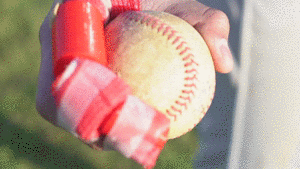
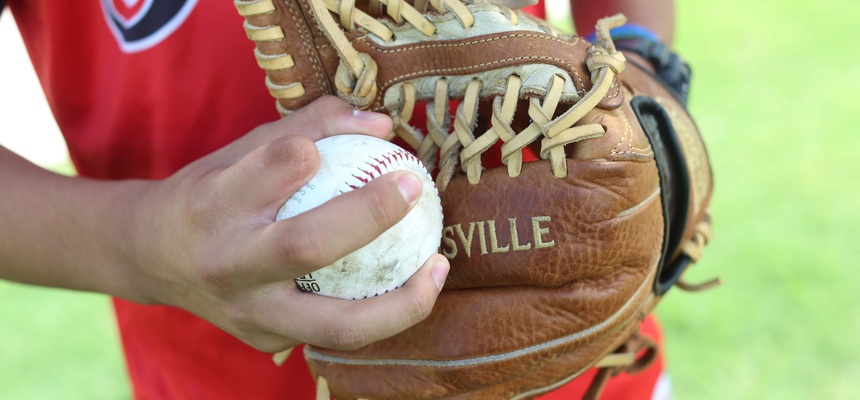
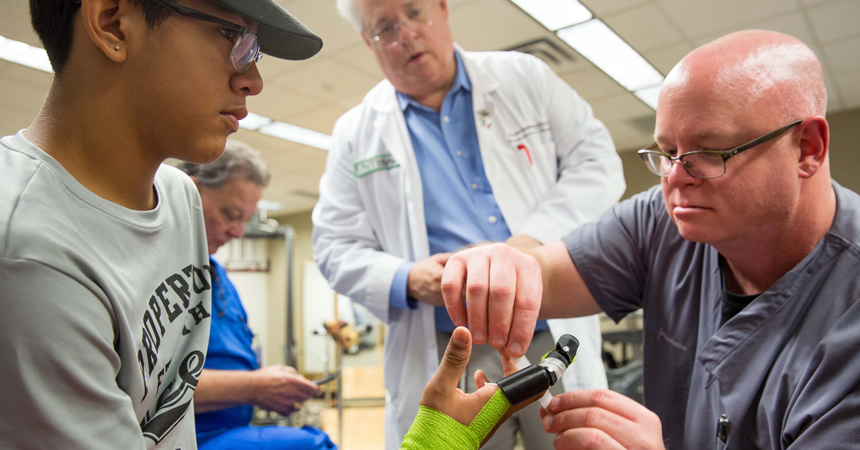
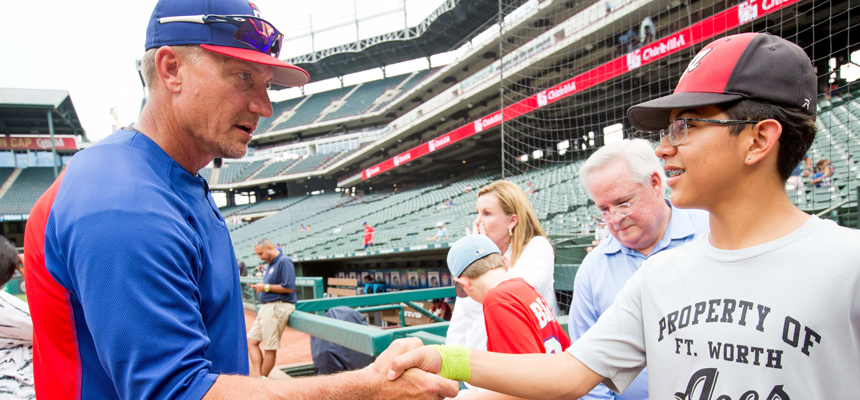

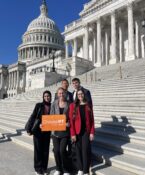

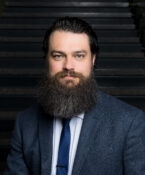

Social media